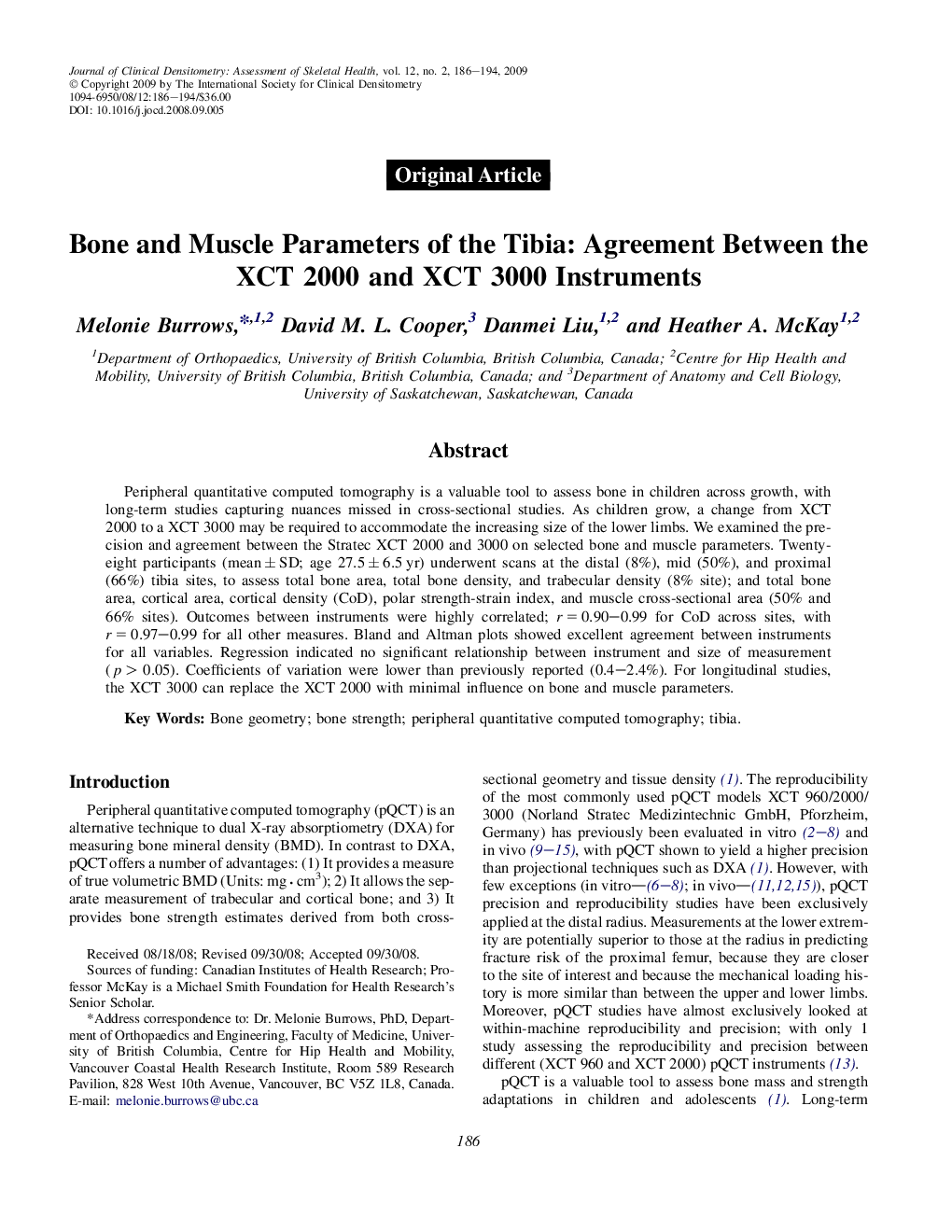| Article ID | Journal | Published Year | Pages | File Type |
|---|---|---|---|---|
| 3271100 | Journal of Clinical Densitometry | 2009 | 9 Pages |
Abstract
Peripheral quantitative computed tomography is a valuable tool to assess bone in children across growth, with long-term studies capturing nuances missed in cross-sectional studies. As children grow, a change from XCT 2000 to a XCT 3000 may be required to accommodate the increasing size of the lower limbs. We examined the precision and agreement between the Stratec XCT 2000 and 3000 on selected bone and muscle parameters. Twenty-eight participants (mean ± SD; age 27.5 ± 6.5 yr) underwent scans at the distal (8%), mid (50%), and proximal (66%) tibia sites, to assess total bone area, total bone density, and trabecular density (8% site); and total bone area, cortical area, cortical density (CoD), polar strength-strain index, and muscle cross-sectional area (50% and 66% sites). Outcomes between instruments were highly correlated; r = 0.90-0.99 for CoD across sites, with r = 0.97-0.99 for all other measures. Bland and Altman plots showed excellent agreement between instruments for all variables. Regression indicated no significant relationship between instrument and size of measurement (p > 0.05). Coefficients of variation were lower than previously reported (0.4-2.4%). For longitudinal studies, the XCT 3000 can replace the XCT 2000 with minimal influence on bone and muscle parameters.
Related Topics
Health Sciences
Medicine and Dentistry
Endocrinology, Diabetes and Metabolism
Authors
Melonie Burrows, David M.L. Cooper, Danmei Liu, Heather A. McKay,
